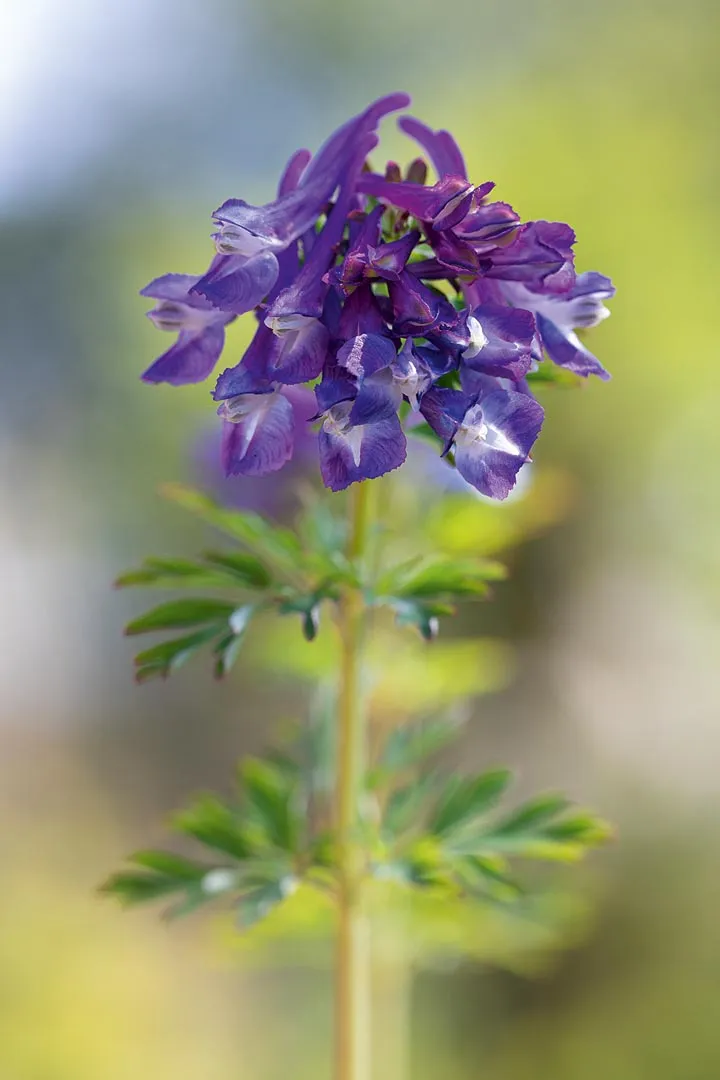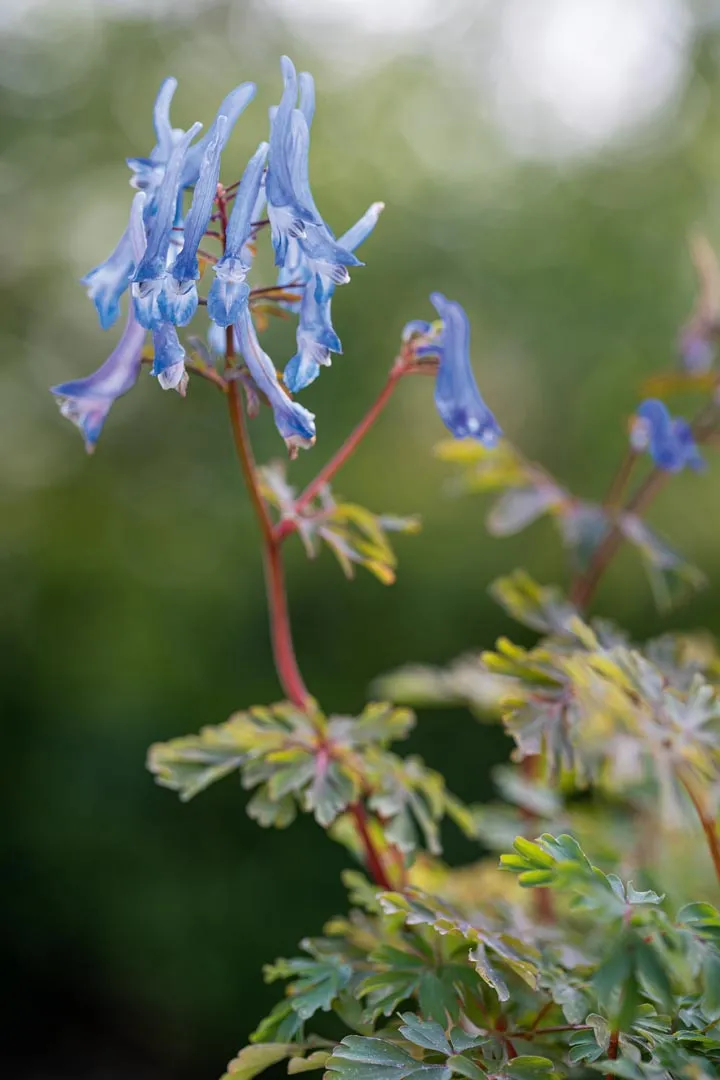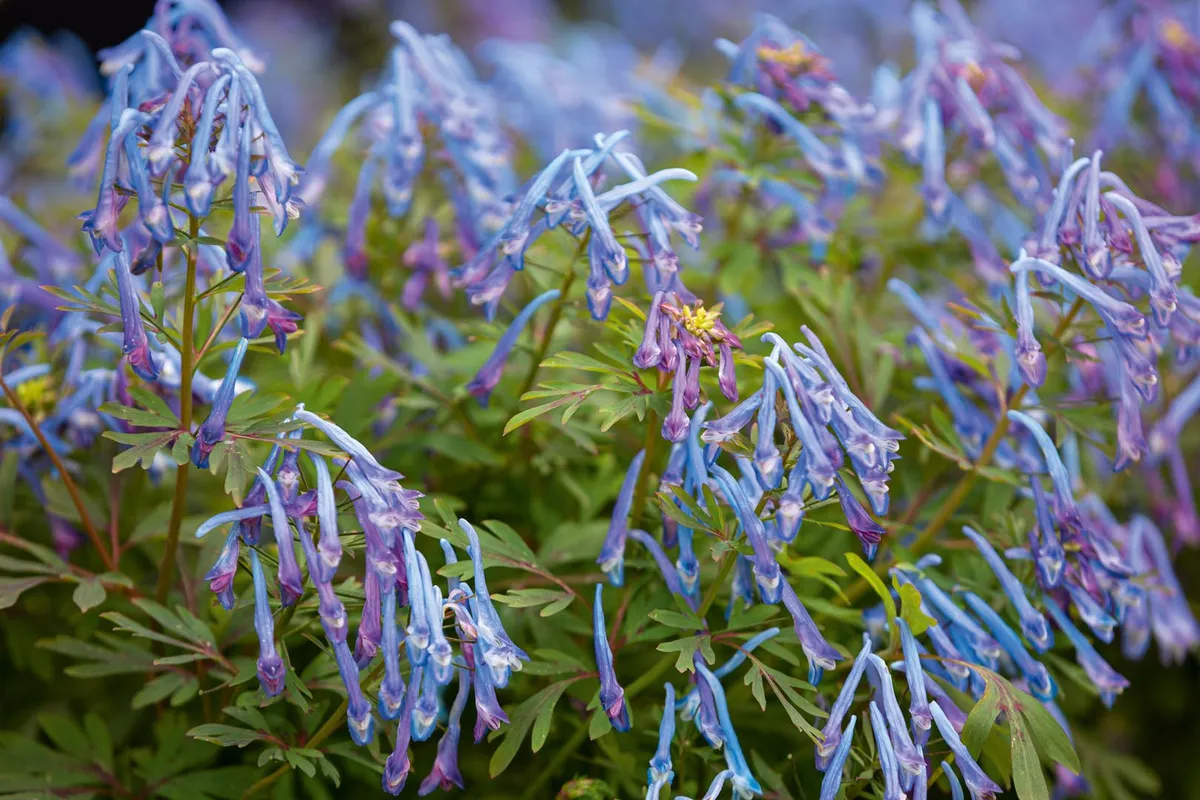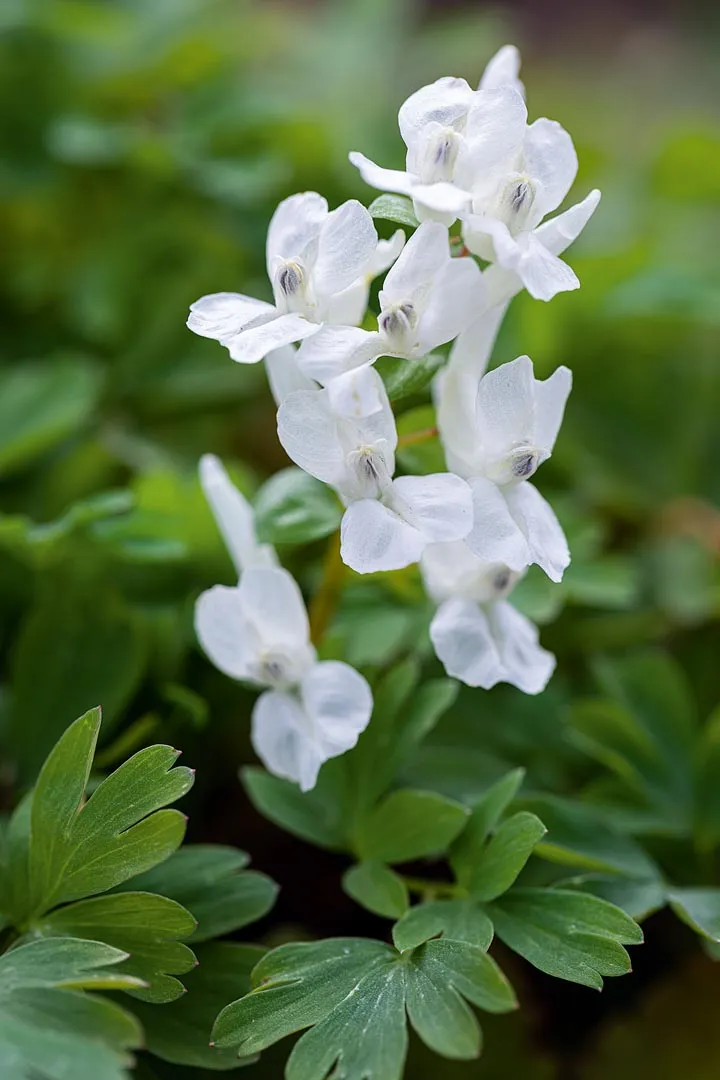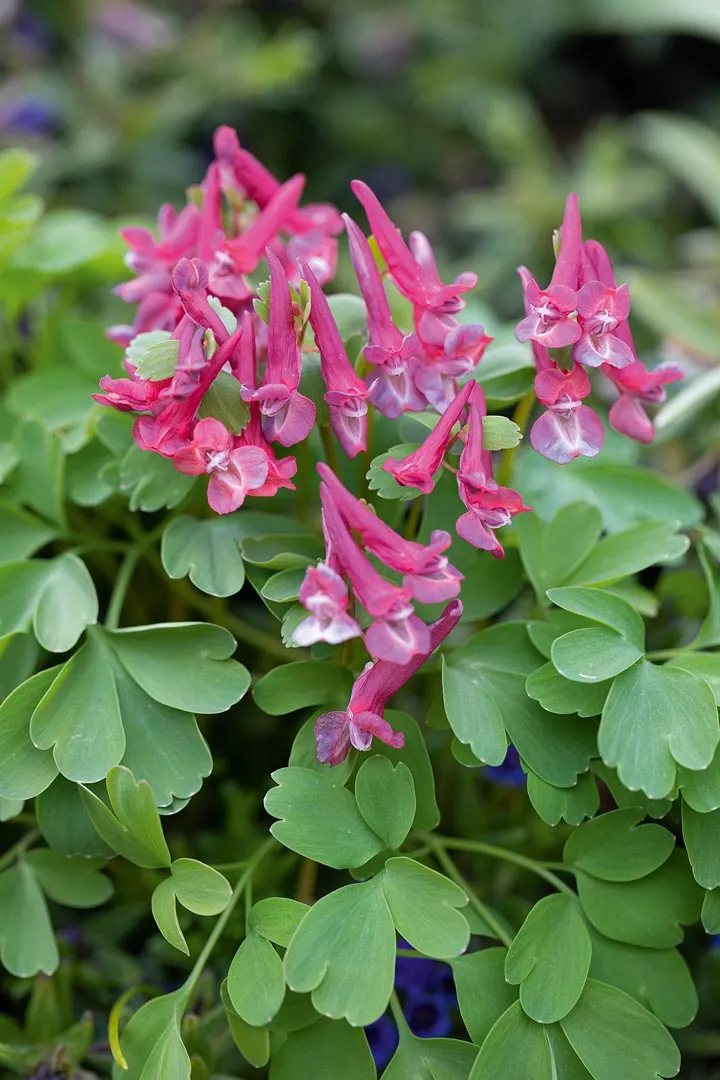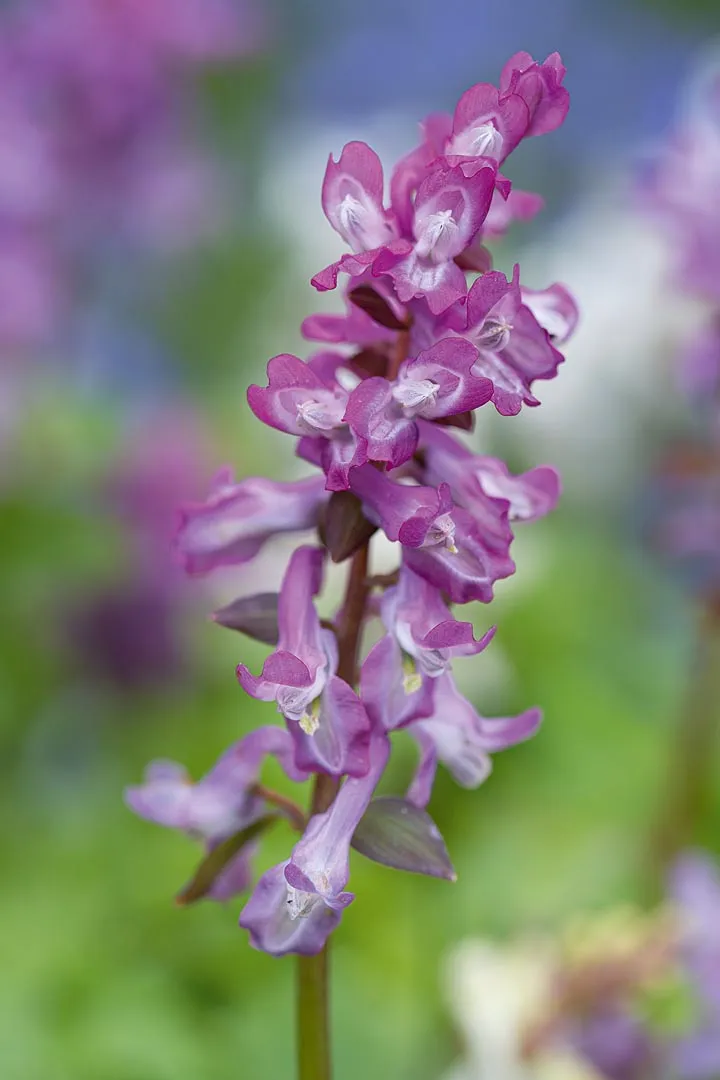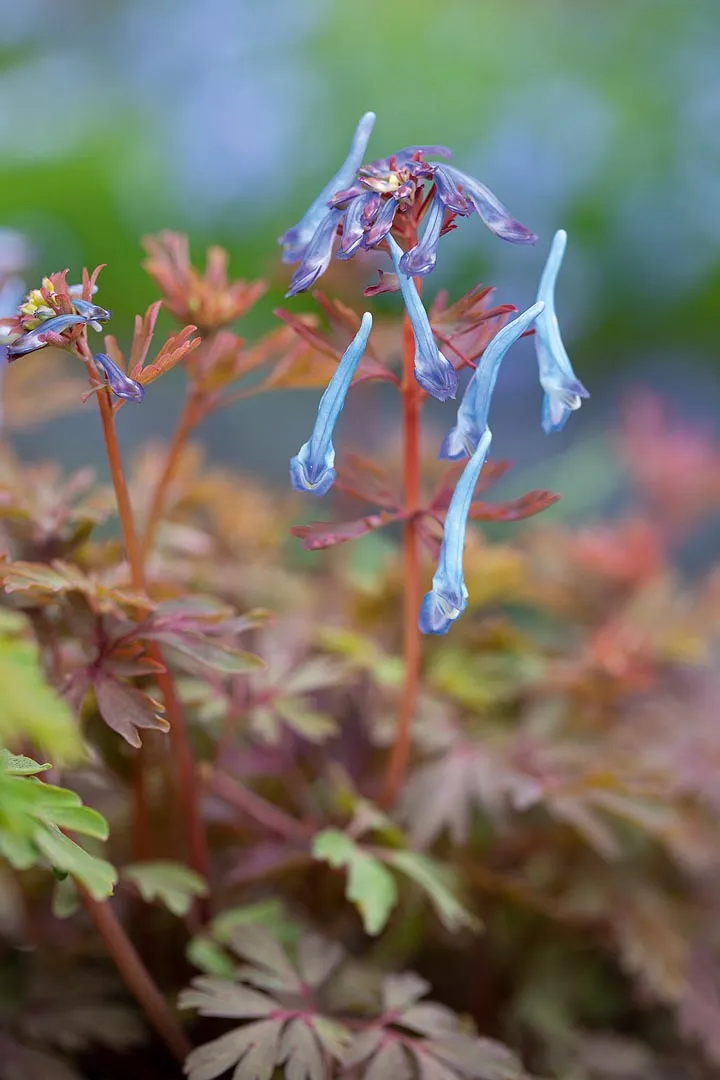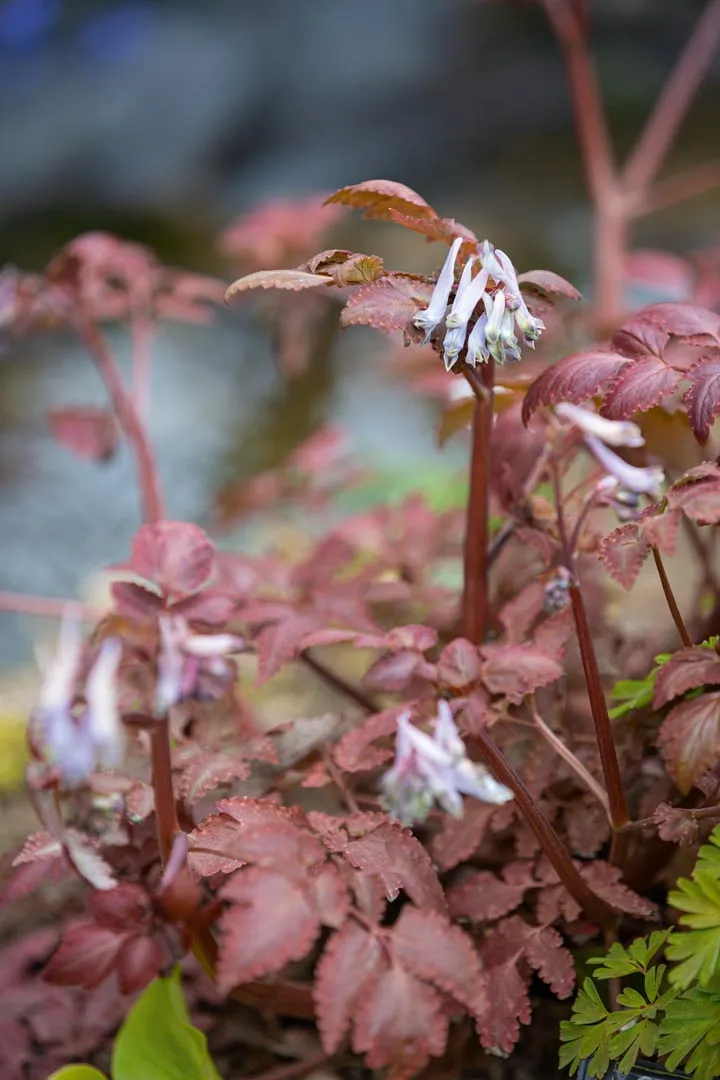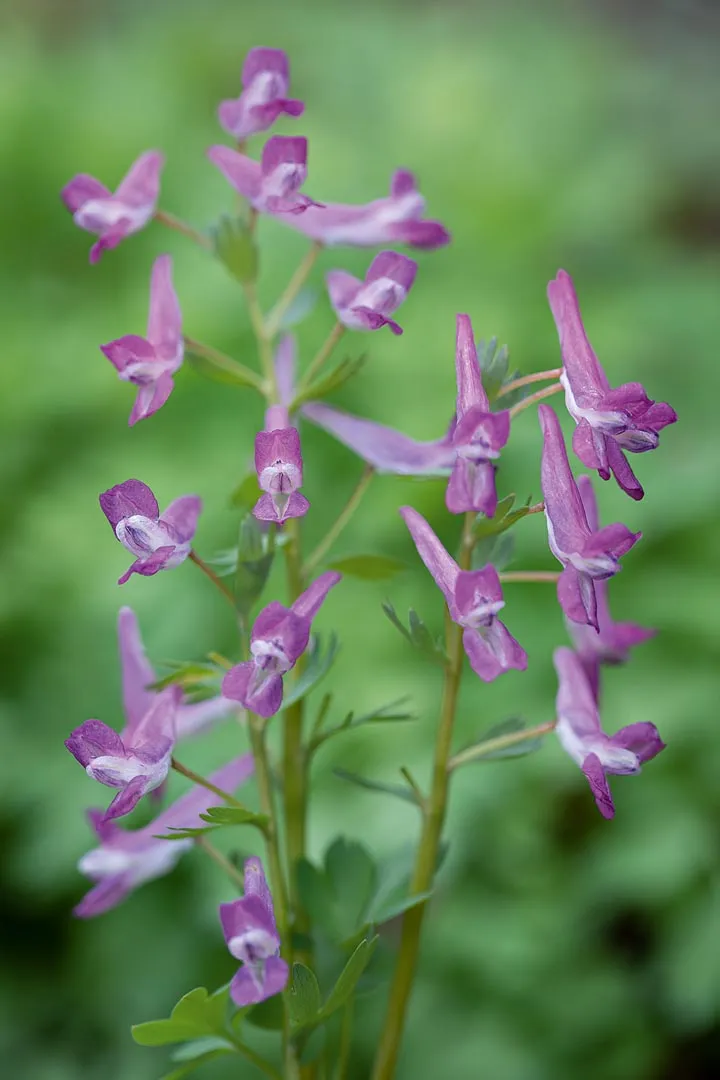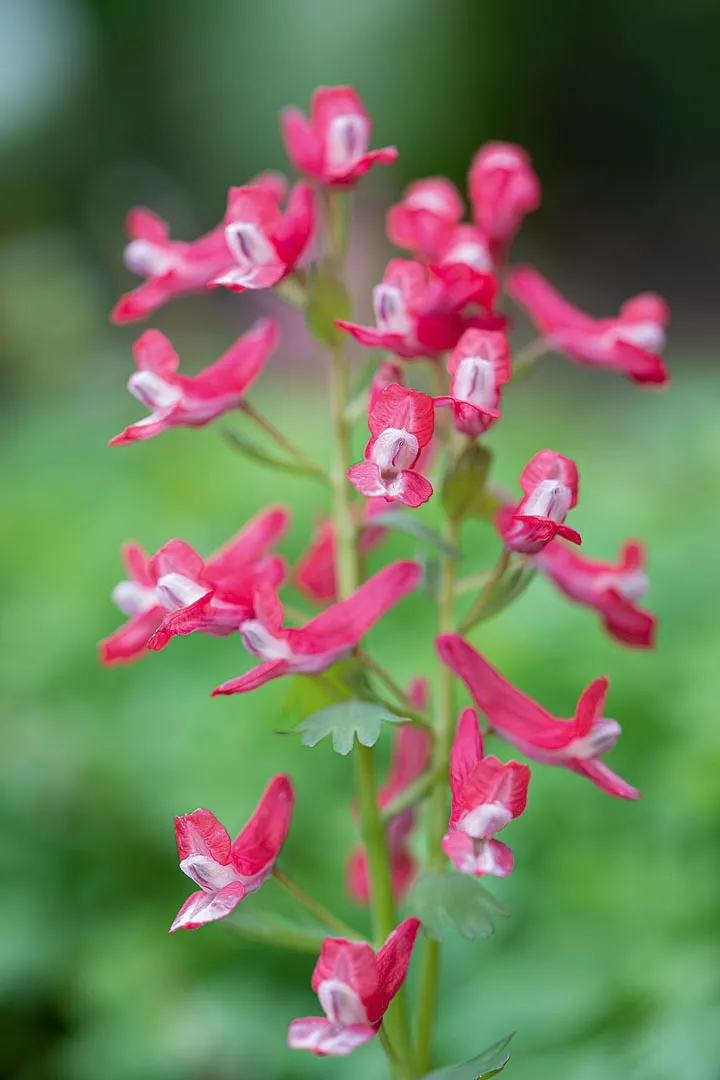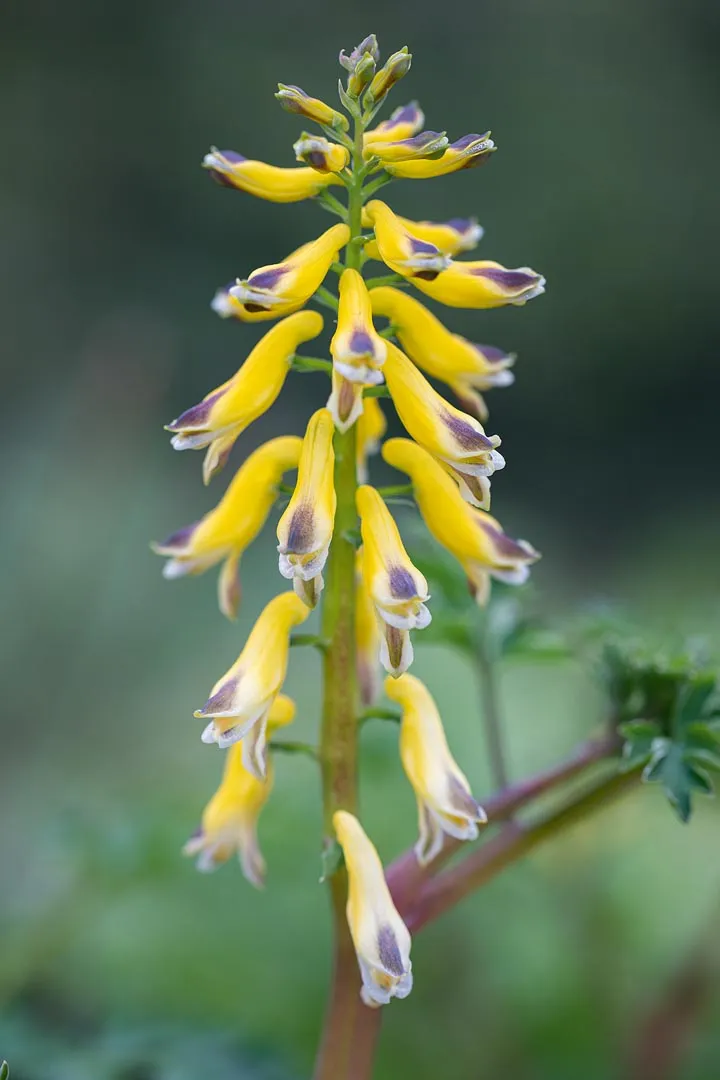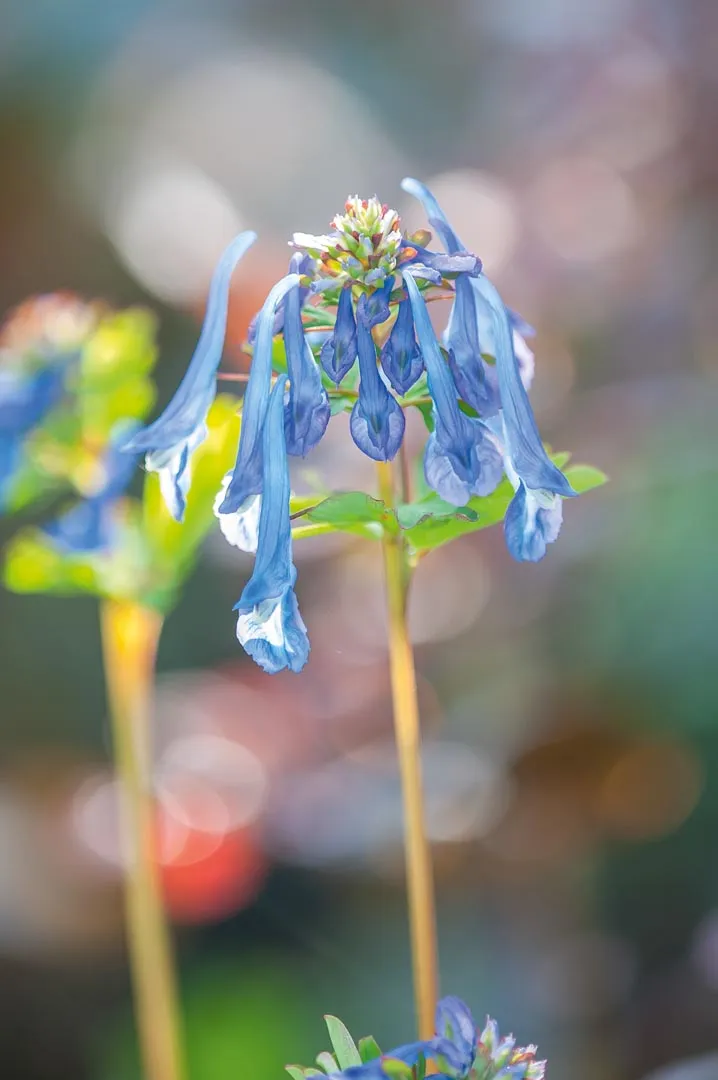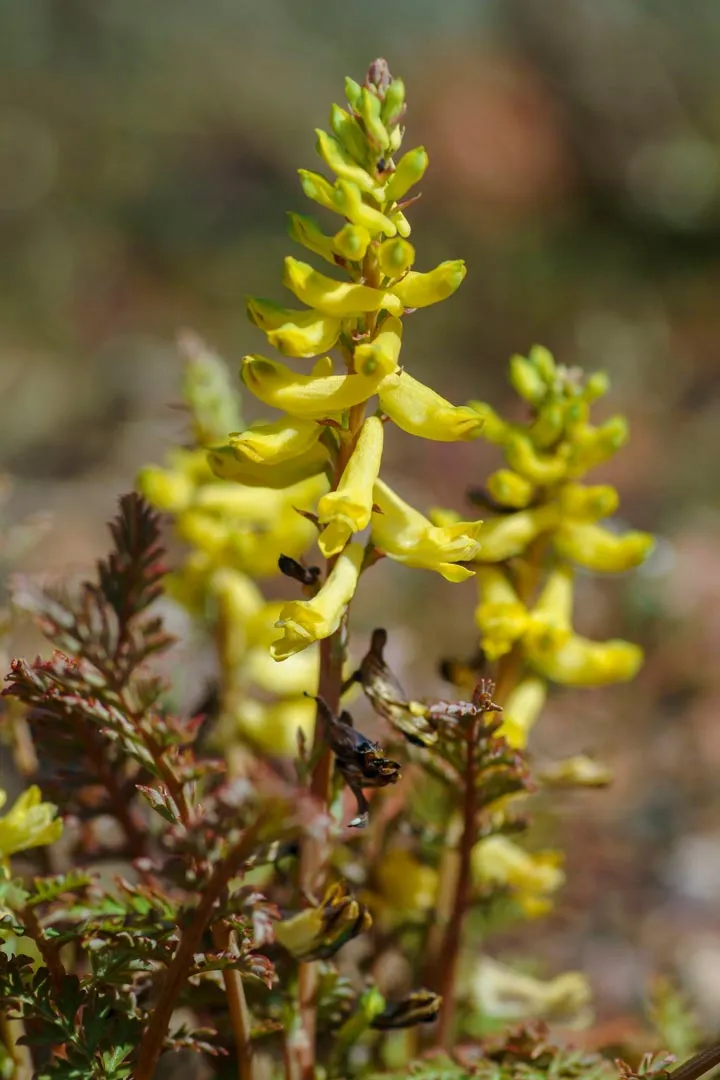The Corydalis genus is a treasure trove of diminutive, jewel-like annual and perennial species, the vast majority of which reside in China and Tibet. Corydalis are perhaps best known for their tubular flowers in shades of vivid blue or yellow, although white and pink cultivars are also available.
There are some taller species, such as American Corydalis scouleri, which can grow to 1m, and central Asian Corydalis nobilis, but most of the species grown in gardens will not exceed 30cm.
Corydalis has been known to Western botany since the Classical period and became of particular interest to apothecaries. Corydalis cava contains poisonous alkaloids that in small quantities were used to treat ailments, both in humans and cattle. But the real richness of the genus was not revealed to the West until China was opened up to botanical exploration: of 450 species in total, 330 are native to China and Tibet.
The genus Corydalis belongs in the same botanical family as poppies, Papaveraceae. Its closer allies within that family include the bleeding hearts (Dicentra, Lamprocapnos and Dactylicapnos) and the fumitories (Fumaria).
While these once formed their own family, the closer alignment of these genera within the Papaveraceae is still recognised and sees them placed in their own sub-family, the Fumarioideae. Although the group was named for Fumaria, reflecting the European bias of earlier botanists, the most important genus in terms of numbers of species and broadness of distribution is now known to be Corydalis.
Where to plant Corydalis
The majority of Corydalis available in garden centres in the UK are herbaceous perennial woodland plants, so they like shade in summer. Growing Corydalis successfully in the UK can be summed up with those familiar three words expressing its soil requirements – ‘moist, but well-drained’. The species will not tolerate water-logging in winter, nor excessive heat and drought in summer. But the difficulties should not be exaggerated.
While it might feel most at home within the UK in western Scotland, the species is well within the grasp of keen gardeners even in southern England. Its beautiful hybrid with Corydalis omeiana, known as Corydalis ‘Craigton Blue’ is said to be even more robust.
Conversely, the tuberous perennial species will thrive in the comparatively dry summer conditions common to southeast England. Corydalis solida and Corydalis cava can be described as bomb-proof on any reasonably well-drained soil. Their summer dormancy renders them immune, respectively, to a summer baking in exposed conditions or to a summer of darkness under a deciduous canopy.
Both species, and especially Corydalis solida, are variable in colour and engagingly promiscuous. Un-named Corydalis solida clones tend to flower in a wishy-washy purple, but selections such as ‘Beth Evans’ and ‘George Baker’ offer clear, strong colours. Once acquired they will readily acquaint themselves with one another in your garden to produce your own indigenous race of colour forms.
Although Corydalis solida presents itself with the daintiness of an alpine plant, it is not to be trusted in the rock garden. Its robust and straightforward approach to growth and reproduction make it too competitive to co-exist with neighbours of a more delicate disposition. At the Savill Garden in Windsor Great Park, there are even large drifts of this species established in meadow grass.
The best Corydalis to grow in your garden
1
Corydalis flexuosa ‘China Blue’
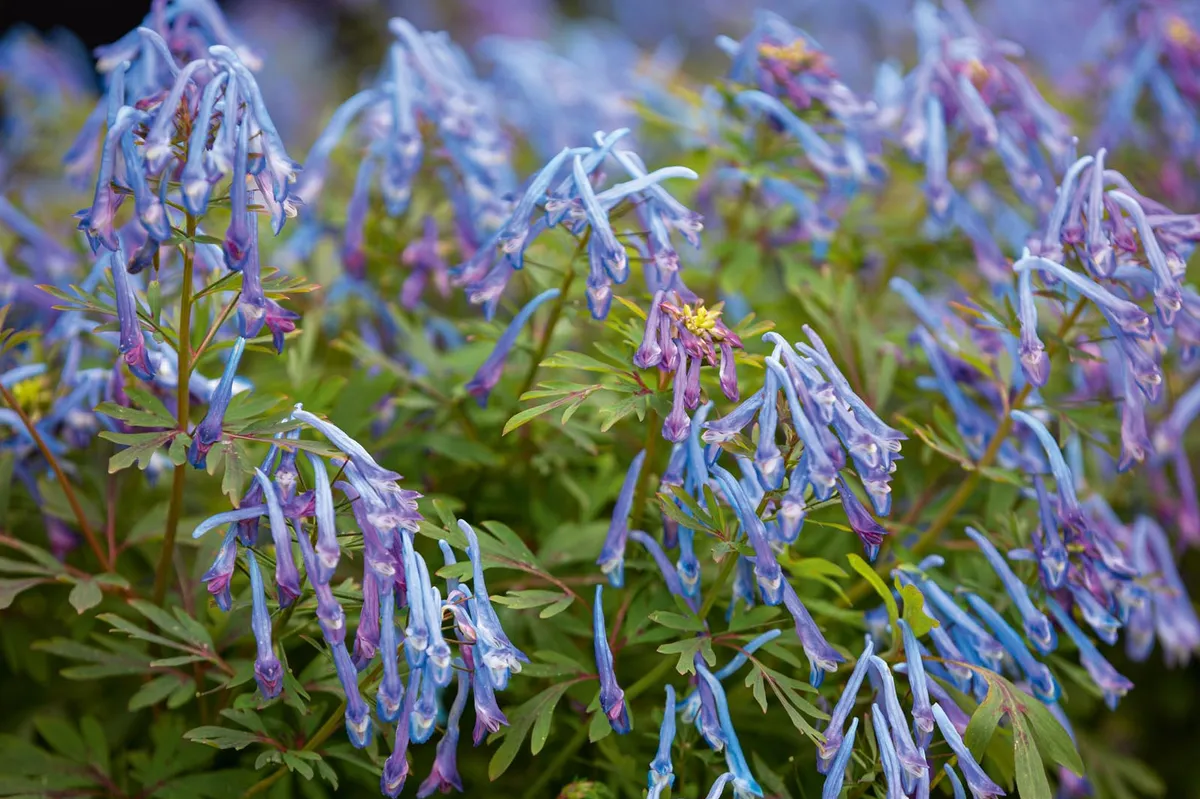
One of a number of early introductions of this species made in 1989 by James Compton, John d’Arcy and Martyn Rix. ‘China Blue’ has bright-blue flowers and is said to be more tolerant of drier conditions than other clones. 30cm. RHS H5†.
2
Corydalis temulifolia ‘Chocolate Stars’
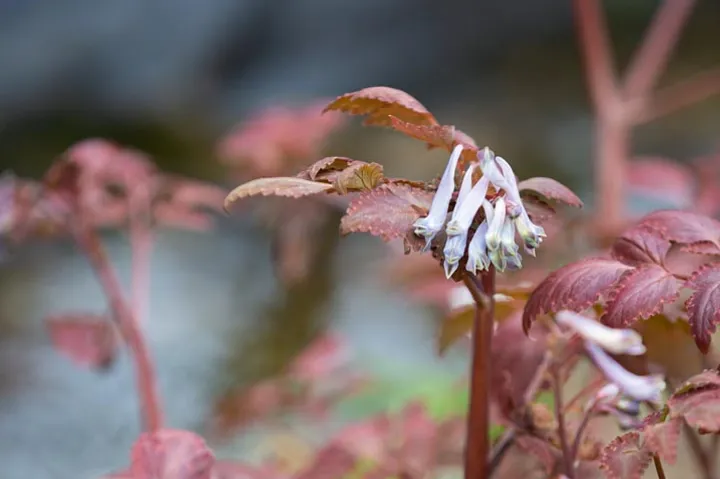
Likes plenty of moisture, but doesn’t like to sit in it. Its insignificant pale-lilac flowers make a good contrast with the striking dark, russet-brown foliage. 40cm. RHS H5.
3
Corydalis flexuosa
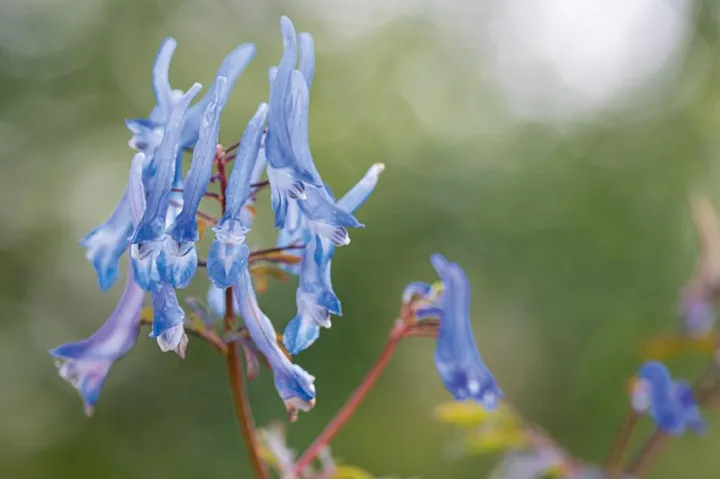
‘Père David’ crossed with ‘China Blue’, it is similar, but increases by stolons at a faster rate. Its stems and midribs are reddish, in contrast to the glaucous foliage – however under stress the foliage
will also redden slightly. 30cm. RHS H5.
4
Corydalis cheilanthifolia
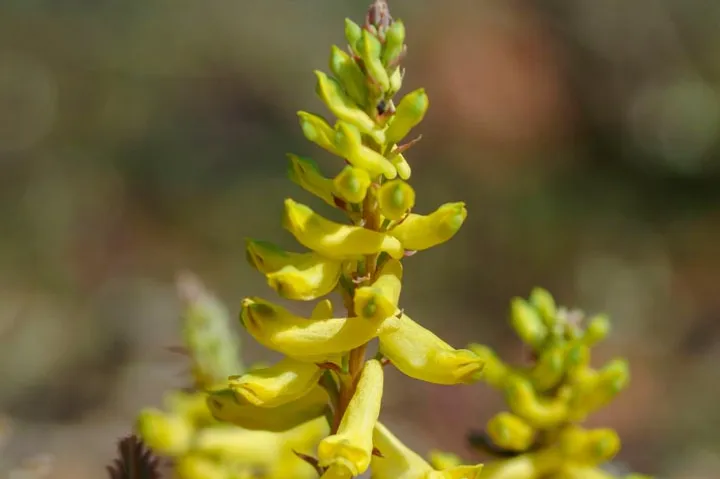
An adaptable species that flowers over a long period from late spring, but its evergreen filigree foliage, which assumes bronze tints in the winter, is perhaps more of an asset. 30cm. RHS H5.
5
Corydalis elata
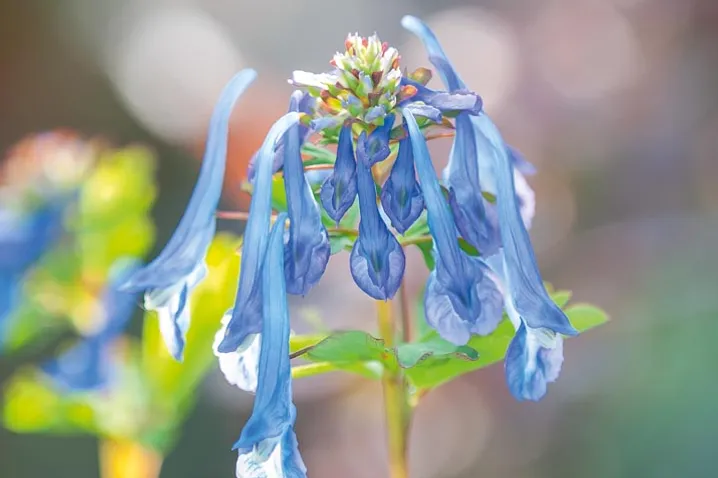
An upstanding blue woodlander with dark-blue flowers that stand out well against the slightly yellowish foliage. It will extend the season of interest being slightly later to flower. 45cm. RHS H5.
6
Corydalis flexuosa ‘Purple Leaf’
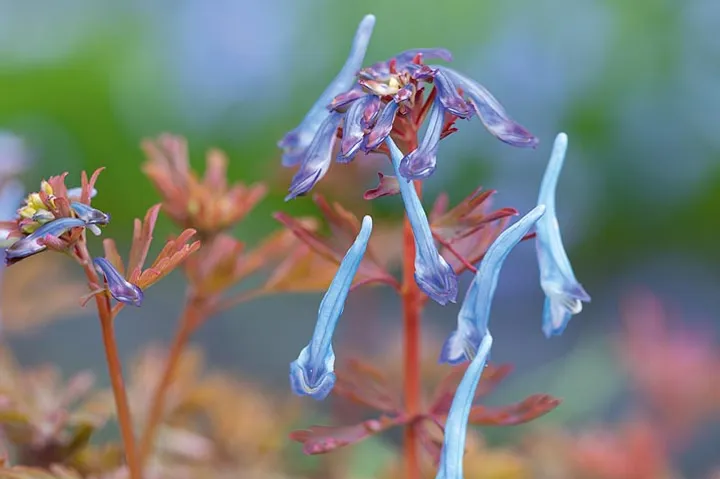
This shows the variability in leaf-colour in the species. Its flowers are purplish blue and appear for an extended period. 30cm. AGM*. RHS H5, USDA 5a-8b.
7
Corydalis heterocarpa
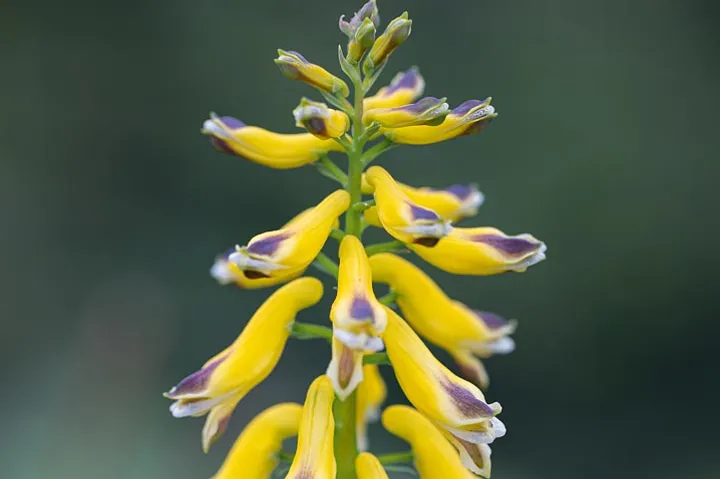
A short-lived perennial that can be perpetuated by seed. The leaves have a fine, fern-like quality, emerging in glaucous tones and developing bronzy tints later in the year. 40cm. RHS H5, USDA 5a-8b.
8
Corydalis malkensis
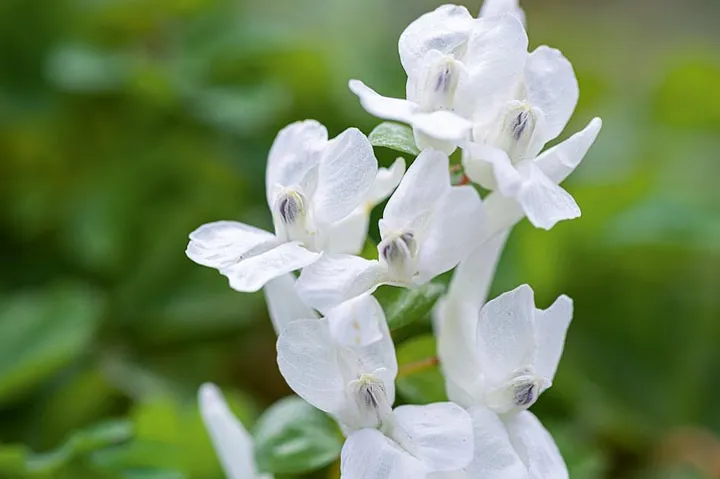
A reliable species with delicate looks that belie its robust nature. Will happily colonise in deciduous shade by seed and has even been known to make a home in meadow grass. 15cm. AGM. RHS H5.
9
Corydalis cava
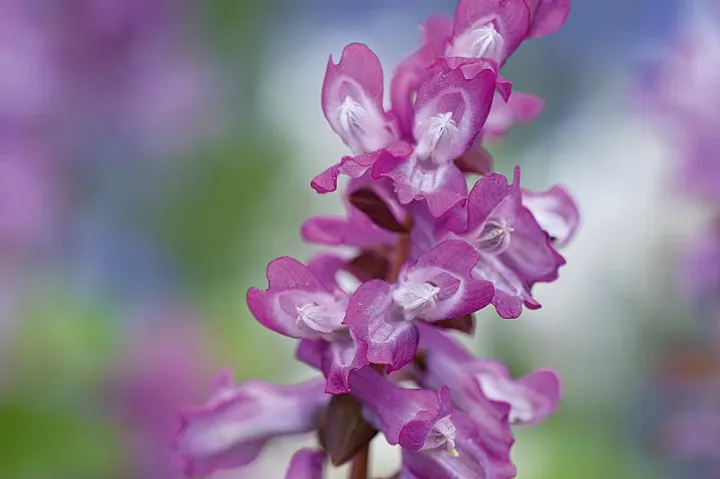
The species with the richest history of cultivation in Europe. A tuberous perennial with alternately divided leaves and terminal racemes of white or purple flowers in early spring. 20cm. RHS H5.
10
Corydalis ‘Korn’s Purple’
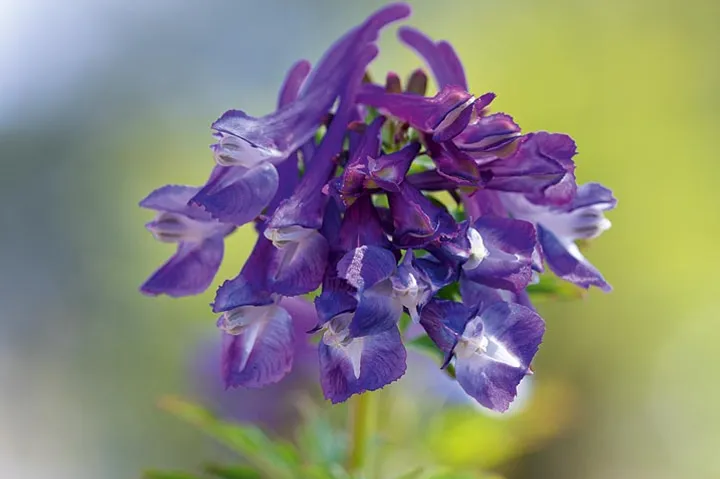
A seedling derived from C. flexuosa, C. elata and C. capitata selected by Peter Korn from his garden in Sweden. A comparatively tall woodland Corydalis with strong, dark-purple flowers. 50cm. RHS H5.
11
Corydalis incisa
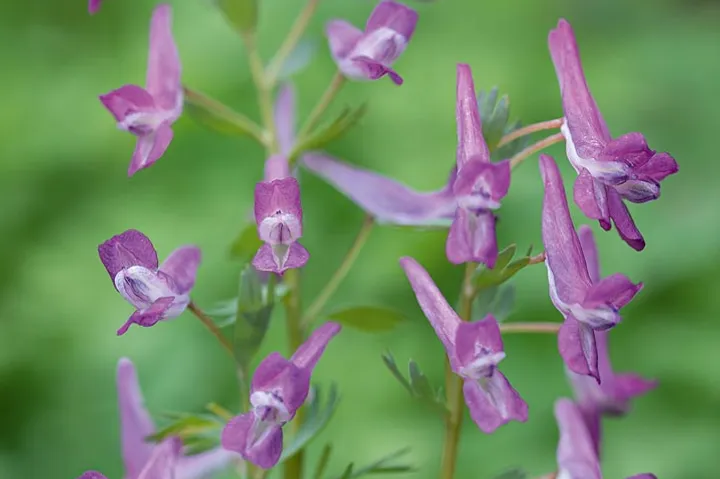
A wintergreen biennial with a long show, from spring to early summer. Spreads readily by seed; in the eastern USA it has escaped gardens and has begun to colonise riverbanks in the wild. 25cm. RHS H5.
12
Corydalis solida hybrid
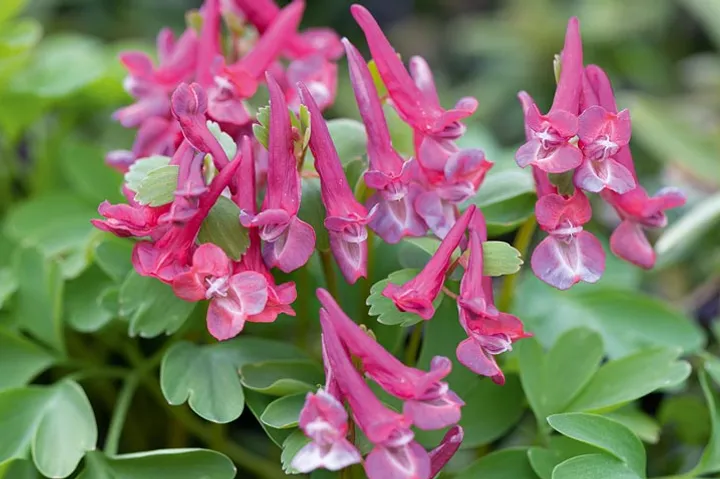
A hybrid originally from the Ruksans’ bulb nursery in Latvia. Janis Ruksans has selected some of the finest colour forms of C. solida available, demonstrating the species’ variability. 30cm. RHS H5.
13
Corydalis solida ‘George Baker’
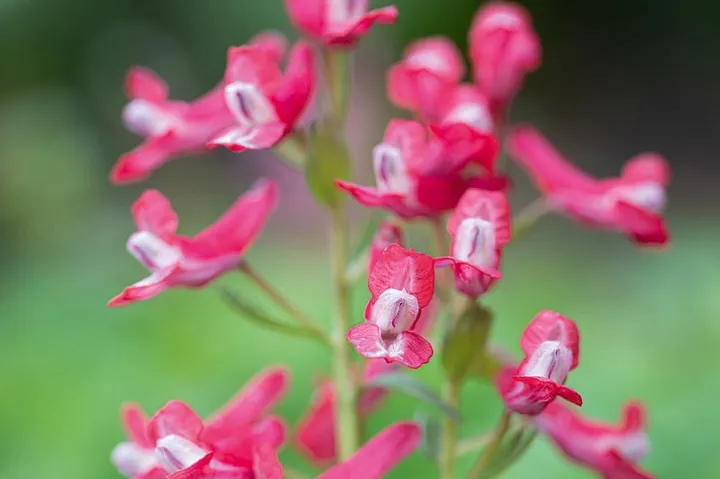
Red-flowered forms of C. solida were introduced from Transylvania during the 20th century. The cultivar name ‘George Baker’ was applied to them in 1977. 30cm. RHS H5.
Where to buy and see Corydalis
• Beth Chatto Nurseries, Elmstead Market, Colchester, Essex CO7 7DB. Tel 01206 822007. bethchatto.co.uk
• Brian Wickenden*. 164 Point Clear Road, St Osyth, Clacton-on-Sea, Essex CO16 8JB. Tel 01255 821744. corydalis-collection.org.uk. National Collection holder. Garden open by appointment only.
• Edrom Nurseries, Edrom, Coldingham, Berwickshire TD14 5TZ. Tel 01890 771386. edrom-nurseries.co.uk
• Kevock Garden Plants, Kevock Road, Lasswade, Midlothian EH18 1HX. Tel 0131 454 0660. kevockgarden.co.uk
• Pottertons Nursery. Moortown Road, Nettleton, Market Rasen, Lincolnshire LN7 6HX. Tel 01472 851714. pottertons.co.uk
• The Savill Garden. Windsor Great Park, Wick Lane, Englefield Green, Egham, Surrey TW20 0UJ. Tel 01753 860222. windsorgreatpark.co.uk
*National Collection holder
